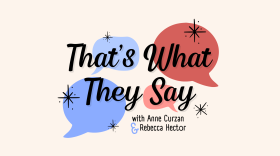That's What They Say has been tackling language peeves for 13 years now, and somehow, we have never talked about the expression "pet peeve," even though we get lots of questions from listeners regarding their language peeves. We love reading those, by the way. The bulk of what you hear on the show comes from listener questions.
The noun "pet" goes back to the 1500s and first referred to a domestic animal raised by hand. By the 1700s, it could also refer to an animal kept for pleasure or companionship. Also by the 1700s, "pet" also starts being used to refer to a person who is indulged or spoiled or treated as a favorite.
The adjective form of "pet" was first used to describe animals, e.g. a "pet rabbit" or "pet dog." By the 1800s, it could also describe something that's a favorite or cherished, like a "pet project" or "pet theory."
Toward the end of the 1800s, "pet" could also be to describe something negative, such as a "pet peeve." The Oxford English Dictionary dates "pet peeve" back to 1919. Around this time there are also examples of "pet hates."
The "peeve" part of "pet peeve" comes from "peevish." This goes back to the 1400s and had a range of meanings, from "perversely obstinate" to "spiteful" to "irritable." In the earliest examples from the 1400s, "peevish" was often used with "fasting," which we've decided must've been the medieval version of "hangry."
To hear more about how "pet" and "peeve" found each other, listen to the audio above. And keep sending your language pet peeves to language@michiganpublic.org.






